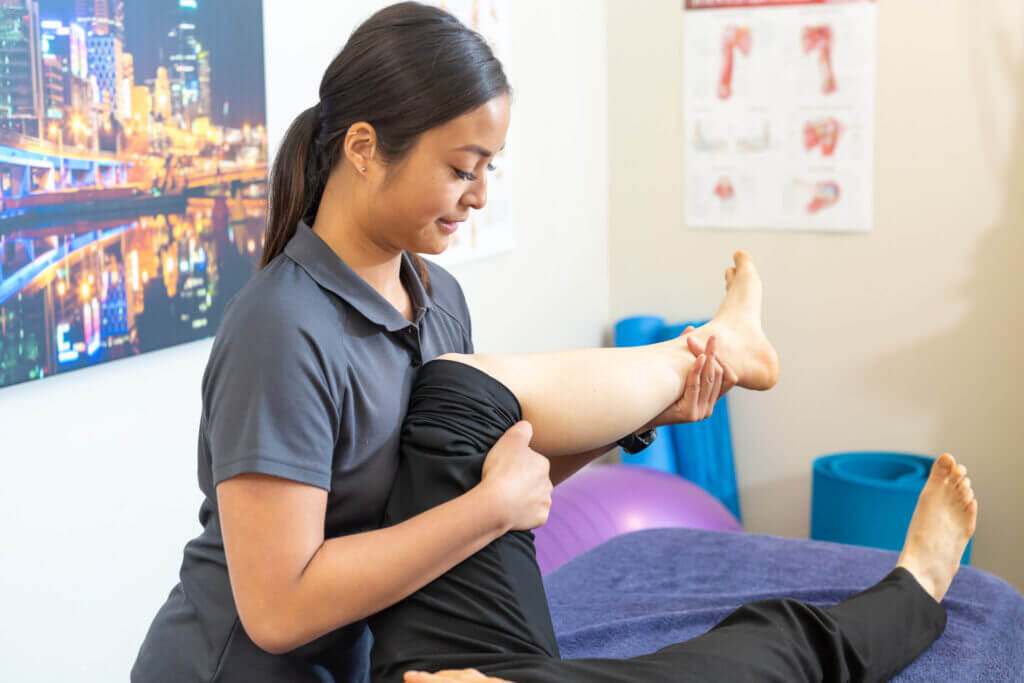It’s that kind of day where you’ve gotten up from your bed and decided it’s finally time to do something about that nagging pain you’ve been experiencing. Maybe you’re going through a pregnancy that’s causing discomfort, or you’re dealing with a specific and acute throb in one of your muscle groups. Perhaps you just want to unwind.
No matter what your intentions are, both remedial and deep tissue massages can provide effective relief. But each other them have their specific objectives and focus areas.
So, remedial or deep tissue massage – which one should you choose?
The difference between remedial, deep tissue and relaxation massage comes down to pressure
The real point of difference between remedial or deep tissue massages is the amount of pressure that’s applied. If you want a soothing experience that makes you drift into dreams of running through a field of dandelions, then a deep tissue session is usually not the first pick.
These sessions are designed to focus on the discomfort and utilise firm pressure from the knuckles and elbows to get out those nagging knots. In some cases, this might even be a little too intense for some, and not the go-to choice for just a ‘relaxation and unwind’ experience.
However, deep tissue methods are highly effective in applying a full-body technique that targets trigger points. If you’re trying to get relief from significant discomfort, then this treatment option is beneficial for doing just that. Beyond this, it can cater to dense layers of fascia and muscle – the connecting tissue to the muscle group.
What it’s suitable for:
- Fibromyalgia
- Piriformis syndrome
- Sciatica
- Repetitive strain injuries
- Back and neck pain
- Posture-related problems
- Osteoarthritic discomfort.
What is a remedial massage?
On the other end of the spectrum, remedial sessions are a form of treatment that offers a clinical approach to problems relating to soft tissue pain. This may include muscles, tendons, ligaments and the tissue surrounding the specific area of the body. In some cases, it can be used as a form of rehabilitation or pain/injury management.
Remedial massages are typically used to treat injuries, and carefully caters to chronic pain. It offers the ability to improve blood flow and promote healing by removing blockages, scar tissue and dead cells.
What it’s used for:
- Cross-fibre friction to increase healing
- Trigger point therapy for fascia or skeletal pain
- Compression for promoting healthy circulation of blood flow and lymph
- Myofascial release that focuses on treating tightness and shortness in muscles.
Tip: Even if you don’t have an injury, you can still seek out this form of therapy for pain or discomfort of many types. It doesn’t even need to be significant or severe. For instance, you could be an office worker that feels tightness and pain from sitting around too long – this treatment option is an all-rounder.
 What are the Benefits of Deep Tissue Massage?
What are the Benefits of Deep Tissue Massage?
Upon receiving a deep tissue massage, a variety of incredible reactions occur within our bodies, providing significant benefits to a range of conditions and injuries. These include:
Stress Relief
Stress can build up through a variety of factors in both our professional and personal lives, and when left unchecked, it can manifest and cause great physical strain on our bodies. A deep tissue massage promotes a rise in the levels of a hormone known as oxytocin, which relaxes the body and reduces amounts of cortisol in our system. Massage also aids in providing relief on physical symptoms, such as tightness in your neck and shoulder muscles, as well as associated headaches.
Pain Reduction
Massage is a commonly used pain reduction technique in a range of conditions, including chronic lower back pain, fibromyalgia, and plantar fasciitis. These typically revolve around the muscle tension that is associated with chronic pain, which needs to be lessened by a deep tissue massage, as the constrained tissue clusters (which cause the pain) are loosened after repeated application of firm pressure. In many cases, research has actually supported that deep tissue massage is more effective in pain management than medication (in addition to being more cost-effective).
Lowered Heart Rate & Blood Pressure
A combination of stress and tension can also manifest in high heart rates and blood pressure. While lifestyle changes are always recommended to control or mitigate stress levels, either remedial or deep tissue massage can have improving effects on systolic, diastolic and arterial blood pressure. This is in no small part related to the production and release of serotonin after the massage, which is another hormone that creates stronger feelings of happiness.
Promote Easier Movement & Alleviate Scar Tissue
Scar tissue frequently leads to a range of chronic pain and stiffness for people across the world, with seemingly little available to them to provide relief. The solution is simple; frequent deep tissue massages focusing on the affected areas will work to break up the stiff scar tissue with improvements in the lymphatic circulation and drainage of trapped fluid. This in turn improves both flexibility and the range of motion in areas previously restricted. If you are recovering from surgery, this may even be a prudent method of minimising the scar tissue that forms.
Mitigate Arthritis
Arthritis symptoms can range from general pain, to stiffness, issues during sleep, and a limited range of movement with your joints. While the amount of pressure will only be relatively moderate in these affected areas, deep tissue massages can also provide some reduction and relief for arthritis symptoms. While not a treatment, it can mitigate pain experienced by sufferers, helping improve the range of movement day to day, and helping you get a comfortable sleep at night.
Rehabilitate Muscles
Our muscles go through a lot in life – whether it is from strenuous exercise, working hard on our feet, or simply encountering accidents where we are placed under unexpected strain or pressure. When muscles become tight and twisted and cause a variety of pain, a deep tissue massage can assist in flushing the toxins congregating in that area, and promote both pain relief and a faster recovery. This is why professional and amateur athletes are frequently called to undergo regular massages to keep their recovery actions at optimal levels, ensuring they proactively assist the delay of onset muscle soreness, better manage fatigue, and avoid injury.
Provide Assistance During Labour & Delivery
While an incredibly special time in a parent’s life, the pain and discomfort experienced during labour and delivery can be significant. Prenatal massages are often recommended as a terrific method of helping expecting mothers to both ease their muscles and receive some relaxation during the pregnancy period. When it is time for the baby to begin their arrival, deep tissue massages continue this effort, offering women a better experience by minimising anxiety, as well as lowering acute leg and back pain.
Get started with a remedial or deep tissue massage today
Feel like you could do with a bit of a release? Would you like to learn more about whether a remedial or deep tissue massage would be most beneficial to you? Get in touch with our clinic now to book in your remedial or deep tissue session.



 What are the Benefits of Deep Tissue Massage?
What are the Benefits of Deep Tissue Massage?